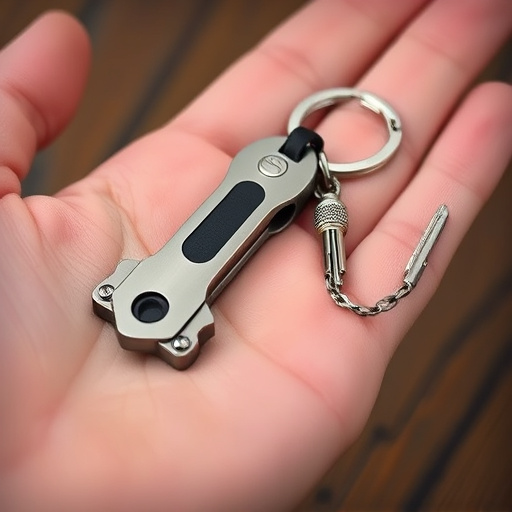When choosing a tactical keychain for self-defense, key considerations include comfort, control, grip strength, and regional Keychain Weapon Permit Requirements. These compact, versatile tools range from basic to advanced functions, with critical deployment mechanisms. Understanding local permit rules is essential to avoid legal issues and practice responsible self-defense; requirements vary widely. Tactical keychains offer a discreet, powerful defense option, featuring durable designs, anti-slip grips, one-handed operation, and add-ons like blades or pepper spray.
“Unleash your personal defense potential with the innovative world of tactical keyring designs. This comprehensive guide explores the art of self-defense as accessible as your keys. From understanding the principles behind effective grip and functionality, to navigating legalities surrounding keychain weapon carry, we delve into essential features making these tiny tools mighty. Discover how to stay prepared, aware, and within legal limits, ensuring you’re equipped with knowledge for peace of mind. Explore key considerations, including keychain weapon permit requirements, as you unlock the secrets of a strategic self-defense accessory.”
- Understanding Tactical Keychain Design Principles
- Legal Considerations for Carrying a Keychain Weapon
- Essential Features of an Effective Self-Defense Keyring
Understanding Tactical Keychain Design Principles
When considering a tactical keychain for self-defense, understanding key design principles is essential. These tools are designed to be compact and versatile, often serving as an extension of your personal safety arsenal. A well-crafted tactical keychain should prioritize comfort and control in hand, ensuring it can be easily accessed and used in high-stress situations. The grip design plays a pivotal role; it needs to provide adequate traction, even when wet or under pressure, to prevent slipping during critical moments.
Tactical keychain design also considers the balance between functionality and discretion. While some models may include advanced features like built-in flashlights or glass-breaking tools, others keep a low profile for everyday carry. Additionally, understanding the keychain’s mechanism is crucial; whether it deploys with a smooth, reliable pull or requires a specific grip and pressure to activate, these factors influence its practicality in self-defense scenarios. Remember that beyond design, legal considerations like keychain weapon permit requirements vary by region, so it’s important to check local laws before acquiring any self-defense tool.
Legal Considerations for Carrying a Keychain Weapon
When considering carrying a keychain weapon for self-defense, it’s crucial to understand the legal permit requirements in your region. Not all areas recognize and allow the open carry of such devices, so navigating local laws is essential. Many countries and states have specific regulations governing the type, size, and use of personal defense tools, especially when attached to a keyring.
Obtaining a keychain weapon permit involves meeting certain criteria, which may include age restrictions, completion of a safety course, and proof of training in its proper use. Some regions also mandate registering your self-defense keyring with local law enforcement, ensuring transparency and accountability. Familiarizing yourself with these legal considerations is vital to avoid any potential consequences and ensure you remain compliant with your area’s guidelines.
Essential Features of an Effective Self-Defense Keyring
When it comes to self-defense tools, a tactical keyring goes beyond a standard accessory, offering users a compact and readily accessible defense option. An effective keychain weapon should be designed with several key features in mind. Firstly, size matters; it needs to be small enough to fit comfortably on a keyring yet robust enough for reliable operation. Secondly, the grip is critical; a tactical design with anti-slip materials ensures secure handling during stressful situations. The ease of deployment and the speed at which the tool can be utilized are also essential, making smooth, one-handed operation a must.
Additionally, durability and reliability are paramount. The keychain weapon should be constructed from high-quality materials that withstand regular use and various environmental conditions. Moreover, considering legal aspects, such as local keychain weapon permit requirements, is vital to ensure its legality and the user’s safety. Features like a sharp, reliable blade or non-lethal options like pepper spray or a metal ball for impact can significantly enhance its effectiveness.
When considering a self-defense keychain, understanding design principles, legalities, and essential features is paramount. Armed with this knowledge, you can make an informed decision about which tactical keychain best suits your needs while ensuring compliance with local laws regarding keychain weapon permit requirements. Remember, preparedness starts with the right tools, and an effective self-defense keychain could be a valuable addition to your personal safety arsenal.
